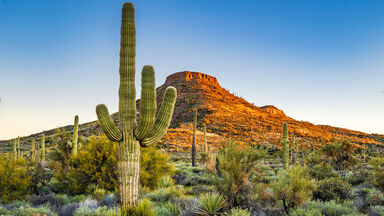Sea spurge Euphorbia paralias and the nationally scarce dune fescue Vulpia fasciculata are frequent, while sea bindweed Calystegia soldanella is very local.
The general characteristic of the flora is the prevalence of herbaceous over forest growths; the high veld is covered by short sweet grasses of excellent quality for pasturage; grass is mingled with protea scrub in the middle veld; the banken veld has a richer flora, the valley levels are well wooded, scattered timber trees clothe their sides and the hills are covered with aloe, euphorbia, protea and other scrub growths.
Some very curious details are observable in these cases of malformation, For instance, the Aecidium eta/mum first referred to causes the new shoots to differ in direction, duration and arrangement, and even shape of foliage leaves from the normal; and the shoots of Euphorbia infected with the aecidia of Uromyces Pisi depart so much from the normal in appearance that the attacked plants have been taken for a different species.
At first sight a South African Euphorbia might be mistaken for a South American Cactus, an Aloe for an A gave, a Senecio for ivy, or a New Zealand Veronica for a European Salicornia.
Among the larger trees are the mountain cedar, reaching to 100 ft.; the gob, which bears edible berries in appearance something like the cherry with the taste of an apple, grows to some 80 ft., and is found fringing the river beds; the hassadan, a kind of euphorbia, attaining a height of about 70 ft.; and the darei, a fig tree.
